Types of Drains & Erosion Protection
Catch Basin Protection
Catch basin inserts such as silt sacks or dandy bags are used to filter sediment from construction site runoff and prevent sediment from entering the storm drain system. The use of filter fabric under catch basin grates is not recommended because filter fabric plugs easily and requires a high level of maintenance.
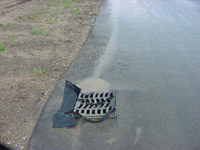 |
 |
Dewatering Bag
A dewatering bag should be used when ground or surface water must be removed from a site to facilitate construction activities. It allows for the filtering of pumped site water and dissipates energy at the outlet. Uncontrolled pumping of site water can cause erosion and sedimentation in the receiving channel.
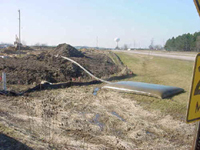 |
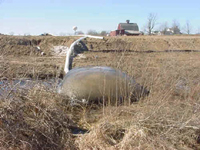 |
Erosion Control Blanket
Erosion control blanket protects seeded areas, slopes and drainage channels from erosion. It retains soil moisture allowing seed germination during dry conditions. Blanket must be installed properly in order to provide the maximum protection against erosion.
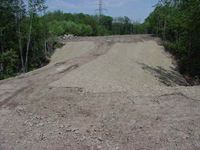 |
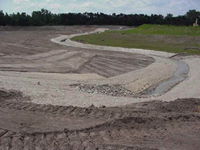 |
Grade Control Structure
Grade control structures can be installed in drainage channels to reduce velocity. They minimize velocity caused erosion and allow for the ponding of water behind structure.
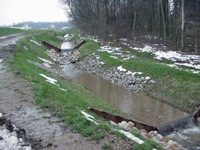
Inlet Filter
An inlet filter should be constructed around storm drain and/or culvert inlets to provide a temporary barrier to construction site runoff. The ponding of water behind the inlet allows sediment to settle out of runoff.
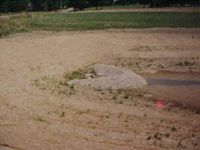 |
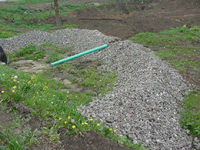 |
Rock Check Dam
Rock check dams should be constructed in flow corridors to reduce velocity until permanent stabilization is achieved and in existing drainage channels to prevent velocity caused erosion.
Check dams reduce surface flow velocities and act as a temporary containment structures to capture sediment.
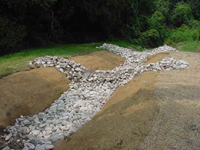 |
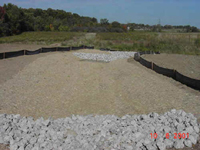 |
Silt Fence
Silt fence is used to prevent sediment in site runoff water from leaving the site. Silt fence should be used adjacent to critical areas such as streams, lakes and wetlands.
In order to function properly, silt fence must be trenched in a minimum of six inches below the soil and installed parallel to a contour.
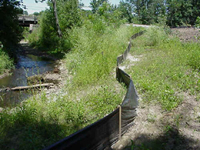 |
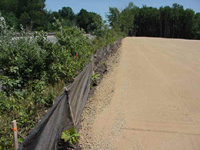 |
Slotted Riser Outlet
The installation of a slotted riser pipe surrounded by 1-2 inch washed stone on a storm water pond outlet provides for a controlled release of runoff. It creates ponding of site runoff which allows larger soil particles to settle at the bottom of pond.
The uncontrolled release of construction site runoff can cause erosion and sedimentation off-site onto neighboring property and in water courses.
 |
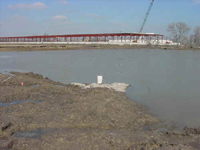 |
Stabilized Construction Drives
Placement of 75-100 feet of stone or crushed concrete placed at site entrance/exit minimizes tracking of soils onto adjacent roadways and the need for sweeping of roadway.
Uncontrolled tracking can cause sedimentation of storm drains and can create a public safety hazard.
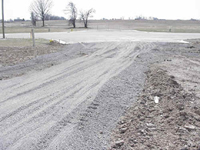 |
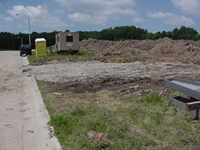 |
-
Water Quality Improvements
Macatawa Rainscaping Program
Rainscaping is a method of watershed restoration that manages rain water where it falls. Rainscaping includes practices like rain barrels, rain gardens, tree planting, native plantings, and riparian buffers. The Macatawa Rainscaping Program promotes awareness and implementation of these practices among homeowners, landscapers and contractors. This program is not unique to the Macatawa Watershed. The Lower Grand River Organization of Watersheds started the program in West Michigan, and graciously worked with the MACC to share materials and provide training in how to run the program. The MACC then worked with several local partners – Hope College, Holland BPW and ODC Network – to customize the program for the Macatawa Watershed.
The Macatawa Rainscaping Program include 3 main components:
Volunteer Training – We will train volunteers to conduct site assessments for homeowners and make recommendations for using rainscaping practices. The training is free and open to anyone 18 and up. We held our first volunteer training sessions on April 14 and 21. We will assign trained volunteers to complete assessments as homeowners request them.
Continue reading to learn about the other 2 components.
Lawn Care and Landscaping Partners Program
The MACC has been working with local lawn care and landscaping companies since 2006 to promote and encourage practices that protect water quality. In 2021, 17 companies signed a statement of commitment to follow these practices. You can learn more about the program and view a list of participating companies here.
Agricultural Update
The MACC was sad to say goodbye to our Project Manager, Rob Vink, last fall. His primary responsibility was to work with area farmers to plan and install conservation practices. Rob worked with seven producers last fall to plan and implement cover crops. A Great Lakes Commission Grant supported by Project Clarity, provided funding to help offset the cost of adding this practice into their operations. In total, producers planted 1,120 acres of cover crops and received $57,000 to cover the costs. The producers contributed an additional $4,200. All seven producers will continue planting cover crops in 2021 and 2022.
Cover crops are non-harvested crops that are planted either before or right after a cash crop is harvested. They help protect the soil from erosion when a crop is not growing. Cover crops also help scavenge nutrients from the soil, support a healthy soil biology, increase soil organic matter, and provide other benefits.
Lakeshore Cleanup Coalition
The MACC and six local partners received a Trash Free Waters Grant from the EPA last summer. Through this grant, we will host volunteer beach and river cleanups throughout Ottawa and Allegan County coastlines and conduct public education.
Despite initial delays due to COVID, in summer/fall 2020, we held 13 events. In total, volunteers spent 482 hours and picked up 695 pounds of trash! Events included two with 95 Hope College students that gave up a Saturday morning for a chance to pick up trash.
Continue Reading to learn more
Click here to see a list of scheduled volunteer beach and river cleanups.
Watershed Management Planning
The Macatawa Watershed Management Plan was last updated in 2012. Since then, the MACC and partners have implemented numerous conservation practices, public education and other activities outlined in the plan. Watershed Management Plans are typically written for 10 years, so it is time for an update. We are working to secure funding to support this work and hope to have an updated plan drafted by mid 2023. Much of the work will be done by MACC staff and partners to evaluate and re-write sections of the plan, and there will be various opportunities for public input. We will hire consultants to complete a few of the needed updates.
The Grand Valley State University’s Annis Water Resources Institute is currently working on two projects that are critical for the update. One team is conducting a public education survey. If you live in the watershed, you may have received a survey in the mail. We hope you took the time to fill it out and extend our thanks to those who did! The results will help us determine future educational topics and delivery methods. A second team is updating a digital land use data. Land use is important for various models that will help determine where to focus future efforts to implement conservation practices as well as policy changes.
Water Quality Improvements in the Harlem Drain
The Ottawa County Water Resources office has been performing extensive maintenance work along the Harlem Drain this spring. The northernmost tributary to Lake Macatawa, the Harlem Drain runs into Pine Creek, from there emptying into Pine Creek Bay. Along with some of these maintenance activities, the crews have been installing nearly a mile of two-stage channel along the section of stream near Macatawa Golf Club. This extra shelf provides additional storage for floodwater and vegetation for filtration. Project Clarity was pleased to help support this project, as the Water Resources office continues their work improving water quality throughout the county by creating greener, more sustainable waterway projects.
Project Clarity 2020 Dashboard
The GVSU Annis Water Resources Institute has been conducting water quality monitoring in the Macatawa Watershed since 2013. They produce annual reports detailing monitoring results and a dashboard report summarizing conditions in Lake Macatawa (phosphorus is pictured at right). There are many factors that influence water quality, including snowmelt, rainfall, temperature, conservation efforts, and the timing of sample collection. 2020 results continue to show variability in the data, but also show that water quality is improving, especially since 2013 when Project Clarity helped to accelerate restoration efforts. Both the full monitoring reports and dashboards from 2014-2020 are available here.
